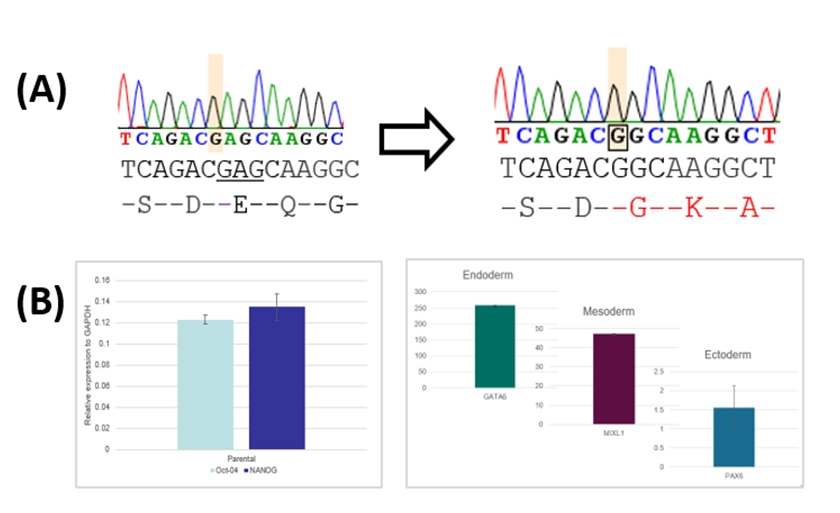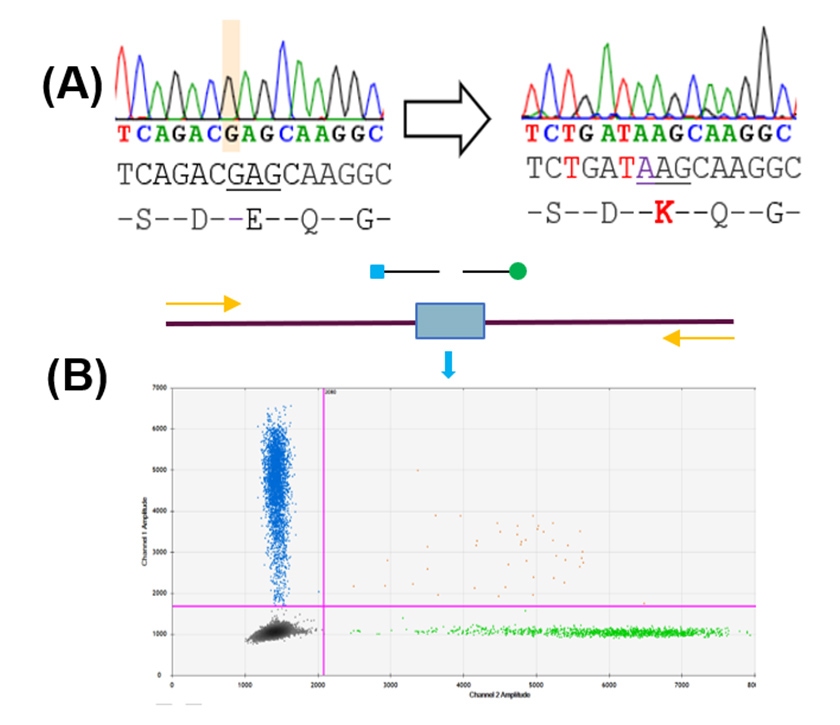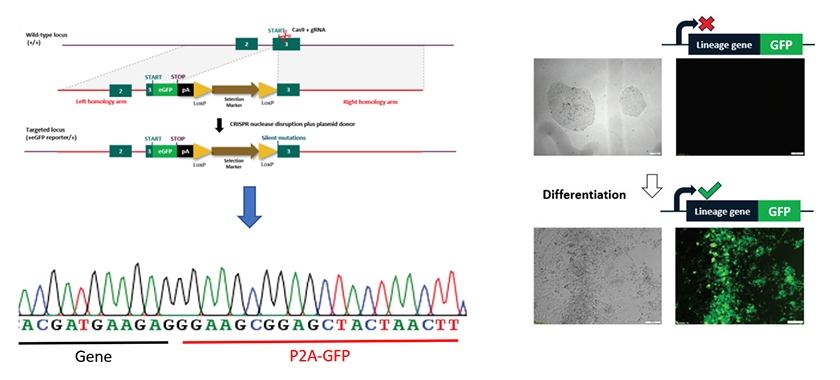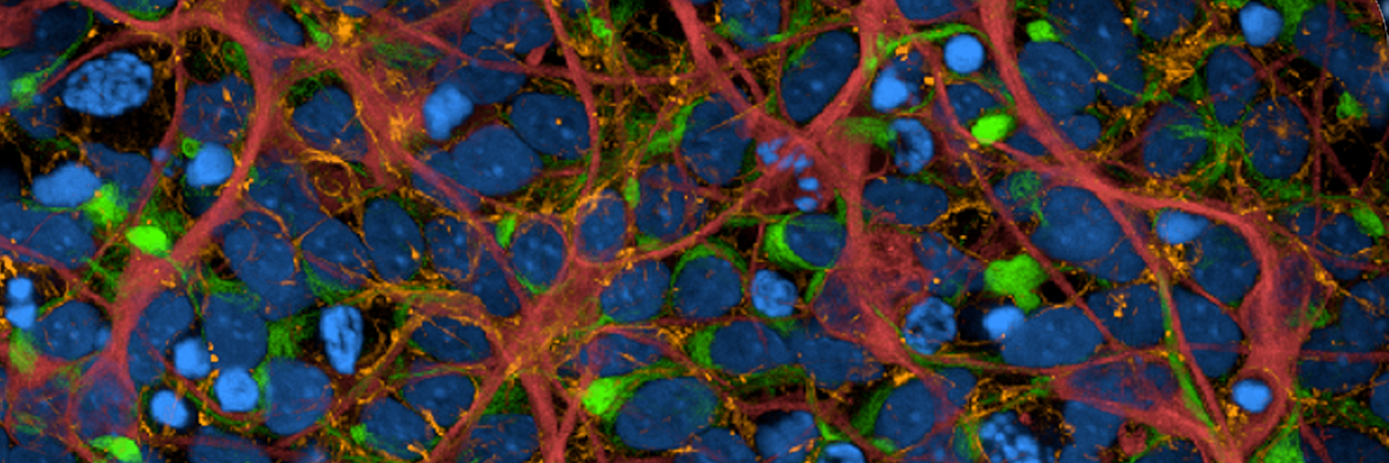
Induced pluripotent stem cells (iPSCs) serve as ideal disease models due to their superior biological relevance and isogenic nature, however gene editing in iPSCs can present a unique set of experimental challenges.
Why edit in iPSCs?
Engineered iPSCs often serve as better models of difficult-to-represent diseases or cell types than traditional immortalized cell lines. Researchers edit iPSCs to create isogenic cell models containing key disease-driving mutations to achieve mechanistic understanding, without background genetic variability, of causative relationships between genotype and phenotype.
Essentially, these edited iPSC lines serve as "disease-in-a-dish" models helping researchers to discover novel drug targets with increased predictability of their safety and efficacy.
iPS cell line engineering services
Many labs simply choose to outsource the engineering portion of their research and focus on downstream phenotypic analysis. Trusting your iPS cell line editing work to a dedicated genome engineering CRO can provide significant cost and time savings.
For nearly a decade, our engineering team has successfully delivered thousands of gene editing projects for major drug discovery, biotech and pharma research. Our vast expertise working with iPSCs provides our partners with confidence that their project with be completed accurately and on time.
We offer genome editing services for:
- Knockout (single or multiple)
- Knock-in
- Reporters
- Overexpression
Project workflow
Once the project scope and timeline are defined, partners receive regular updates from their dedicated project manager.

Pluripotency testing
We know the importance of maintaining pluripotency throughout the entire gene editing process. Our preclinical services team take careful measures to maintain the pluripotency status of your cells. In addition, Alkaline Phosphatase staining is provided free of charge for all our iPS cell editing projects. If you require extra assurance, we can also provide screening for additional pluripotency markers.

Engineering capabilities
Knockout

(A) Confirmation of genotype: Deletion of A nucleotide at the double strand break site leading to a premature stop codon at the target locus.
(B) Differentiation assessment: Pluripotency and trilineage differentiation assessment of the knockout clones.
Knock-in

(A) Confirmation of genotype: Deletion of A nucleotide at the double-strand break site leading to a premature stop codon at the target locus.
(B) Differentiation assessment: Pluripotency and trilineage differentiation assessment of the knockout clones
Reporter cell lines

Find out more about our cell line engineering services or contact our team to discuss your needs.

































